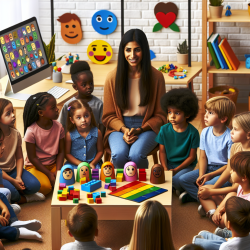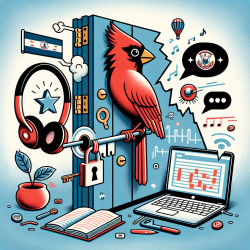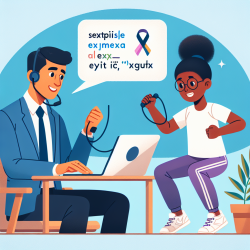Introduction
In the field of speech-language pathology, understanding the nuances of social behavior in children with genetic syndromes like RASopathies and idiopathic autism is crucial. A recent study titled "Social behavior in RASopathies and idiopathic autism" offers valuable insights into the distinct patterns of social strengths and weaknesses in these children. This blog will explore the key findings of the study and provide actionable steps for practitioners to enhance their therapeutic interventions.
Understanding RASopathies and Idiopathic Autism
RASopathies are genetic syndromes resulting from mutations in the RAS-MAPK signaling pathway. These syndromes, including neurofibromatosis type 1, Noonan syndrome, and others, are associated with a range of medical and behavioral challenges, including a heightened risk for social difficulties and autism spectrum disorder (ASD).
Idiopathic autism, on the other hand, is a behaviorally defined disorder with no specific molecular pathology identified. The study aimed to compare social behaviors across these conditions, focusing on empathy and social competence.
Key Findings
- Children with RASopathies demonstrated more resilience in empathy compared to their overall social competence.
- Stronger communication skills and fewer hyperactive-impulsive behaviors were linked to increased empathy and social competence in both groups.
- Emotional challenges were associated with lower social competence in children with RASopathies but stronger empathy in children with idiopathic autism.
Implications for Practitioners
These findings suggest that children with RASopathies have unique social behavior patterns that differ from those with idiopathic autism. Practitioners can leverage these insights to tailor interventions that capitalize on the strengths of each group.
Here are some strategies practitioners can implement:
- Focus on Communication Skills: Enhancing communication abilities can significantly improve social competence and empathy. Practitioners should incorporate communication-focused interventions in their therapy plans.
- Address Emotional Challenges: For children with RASopathies, addressing emotional difficulties can lead to better social competence. Emotional regulation strategies should be integrated into therapy sessions.
- Leverage Empathy Strengths: Encourage and nurture the empathetic behaviors observed in children with RASopathies. This can foster positive peer relationships and social success.
Encouraging Further Research
While the study provides valuable insights, it also highlights the need for further research to explore the underlying neuropsychological factors influencing social behavior in these groups. Practitioners are encouraged to stay informed about ongoing research and consider participating in studies to contribute to the growing body of knowledge.
To read the original research paper, please follow this link: Social behavior in RASopathies and idiopathic autism.










